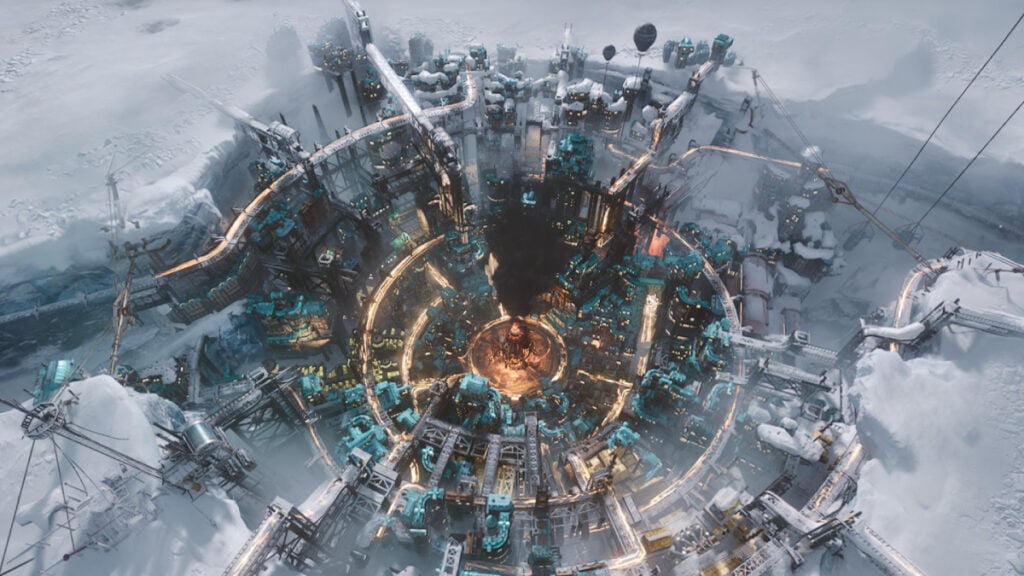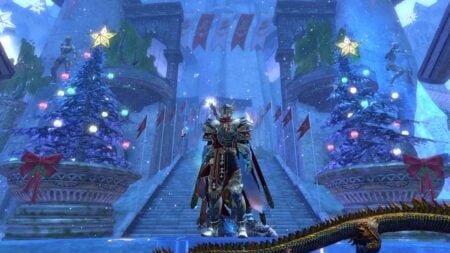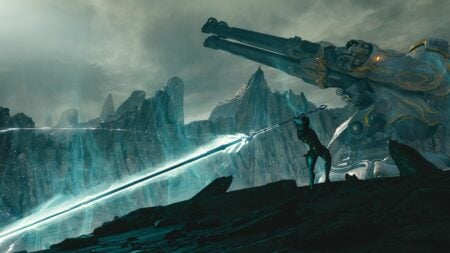Skip To...
As I progressed through my campaign in Frostpunk 2, I pondered, “How can a game full of bleak moments hook me so much?” Think about it: after the fifth time seeing the “100 people died frozen” message, one would start feeling a bit depressed or stressed about the way they are running things—not me. On the contrary, the more I failed, the more people died, the more districts I lost, the more I wanted to go on. Frostpunk 2 is a top-notch strategic simulation game that improves upon every single aspect of its predecessor. Assuming you have a high tolerance for pain and stress, you’ll have a post-apocalyptic blast here.
Thirty years after the cataclysmic event that froze the Earth, you, as the Steward, must manage a city sitting under a loose icicle, so to speak. Many might think this is just Frostpunk with a new coat of paint and not many new added features. Let me correct that: Frostpunk 2 takes the strategic post-apocalyptic survival mechanics of the first installment and takes them to a larger scale. Forget the days of managing a single building or just your community. You now have complete districts and distinct social groups with clashing ideologies ready to challenge you at every turn.
More People, More Problems
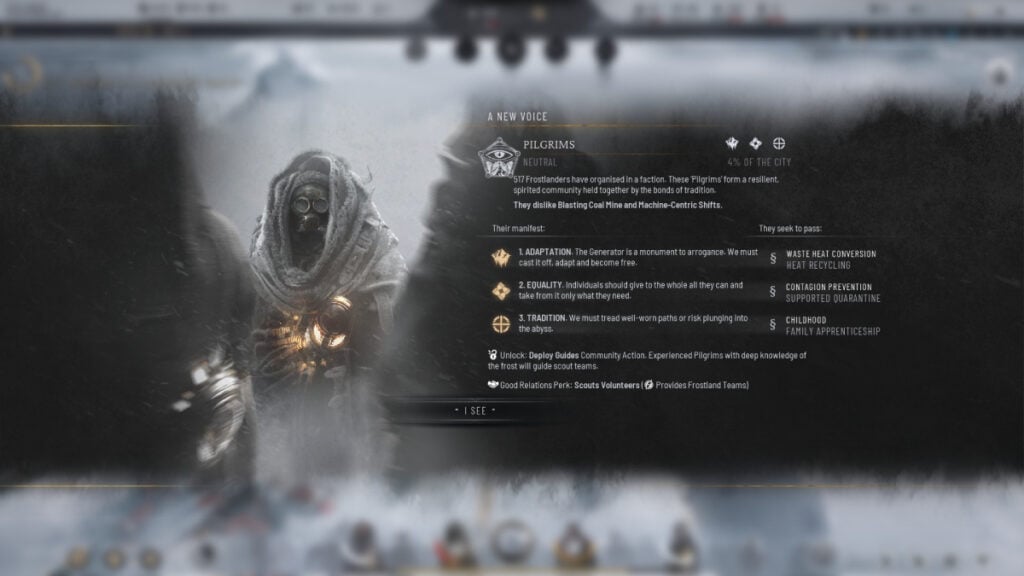
One thing that 11 Bit Studios clarified during one of the previews I attended for Frostpunk 2 was that the sequel isn’t just a few features added to what we already saw in the prequel. Instead, they wanted to take everything to a grander scale. One of the key concepts we’ve seen was, “What happens after survival?” Which is an interesting take.
Thus, Frostpunk 2 begins with an already established city, which has endured the worst of the apocalypse. However, that doesn’t make things easier. On the contrary, as the Steward of this fledgling utopia, it’s your job to keep all factions happy, provide for all the citizens, and worry about things on a much larger scale. It’s not an easy task.
As I began the campaign, my first task was to secure a permanent source of fuel for my city, which would let me fire up that generator to keep people warm. Initially, there were enough coal deposits around. So, I built a few extraction districts and let them gather that indispensable resource. Yet, all good things must come to an end.
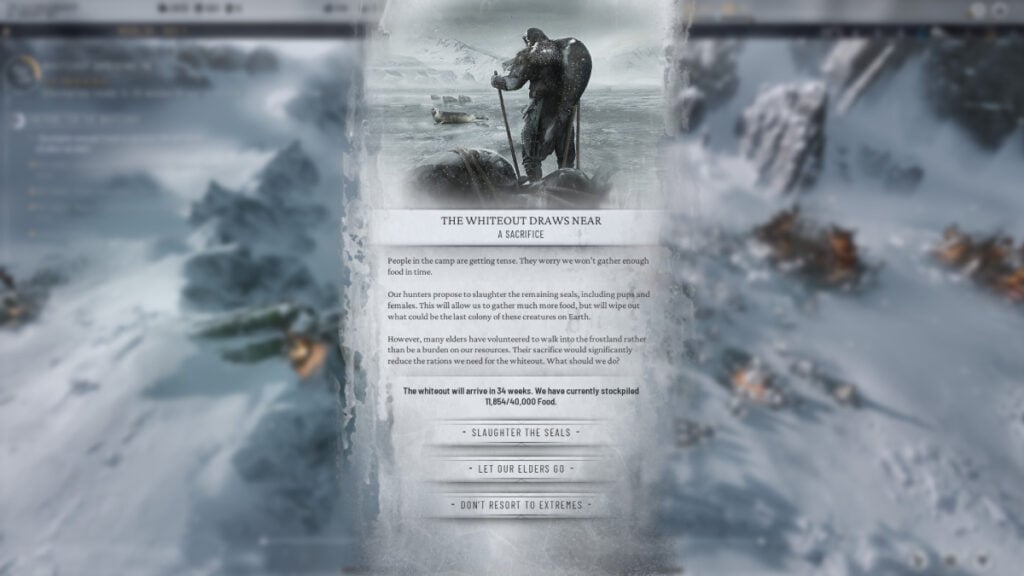
The moment my coal ran out, I had to send a few expedition teams to scour the frozen wasteland, hoping to find a better source of coal, and they did. With the teams in place, I created a new colony and sent resources between my two cities.
So far, it all might sound like something you experienced in Frostpunk, but that’s because I haven’t mentioned the best and most stressful thing about the sequel: factions. These groups of people with different ideologies will be in your city, ready to challenge your ideas, support you, or make your time miserable. The city’s progress is no longer your sole decision, as almost everyone has to agree to the slightest change in your utopia.
Careful What You Promise
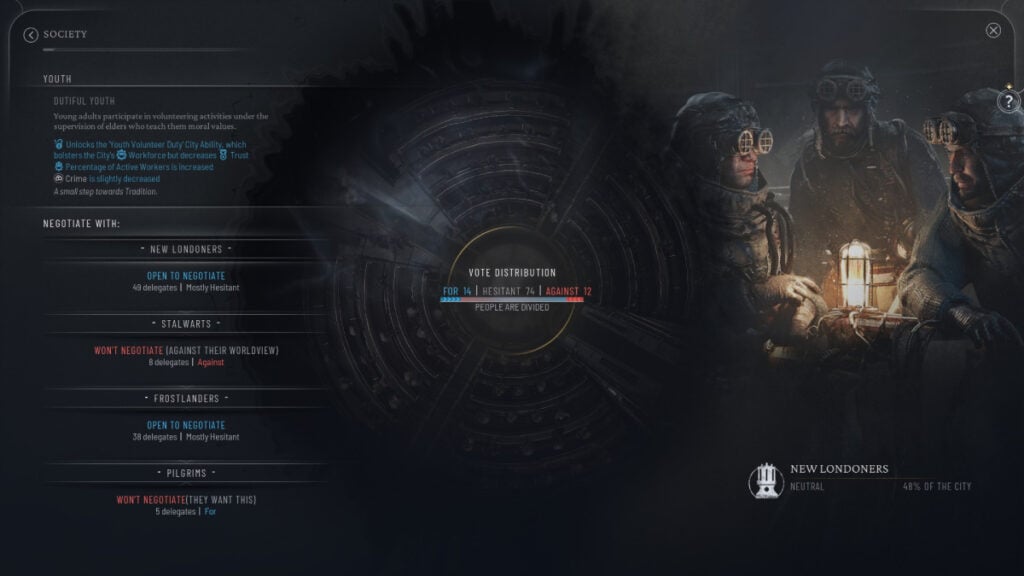
I began with three factions in the game’s story mode: the Stalwarts, New Londoners, and Frostlanders. Each had different ideas about how the city should be run and usually clashed with one another. For instance, New Londoners are all about order and using automatons to maintain the city. On the other hand, Frostlanders prefer a more human approach to certain things. Yet, these ideologies are more than just a flair for each faction. Every single one plays a crucial role when developing your city.
For example, once the council opens up, you can propose laws every ten weeks. One of the first you have to put on the table concerns how the city should mine coal. New Londoners opted for a faster yet more costly option, while the Frostlanders offered a cheaper solution with the downside of increasing disease in the city. Naturally, I went with the former. I’d rather spend more resources on my mining operations than have sick people. However, I had to convince the other factions to help me. To do so, I promised the Frostlanders to pass a law that would make the whole city help during expeditions.
The above is just one small example of how the political landscape works in Frostpunk 2. At first, I didn’t think proposing laws would bring me a lot fo excitement, but it was my absolute favorite part of the sequel. The nail-biting moments every ten weeks were great as I tried to find laws to keep everyone happy without compromising my city’s progress. It is quite challenging to juggle all factions simultaneously, but I feel that adds an engaging layer of strategy I rarely see in other games of the genre.
Unable to Please Everyone
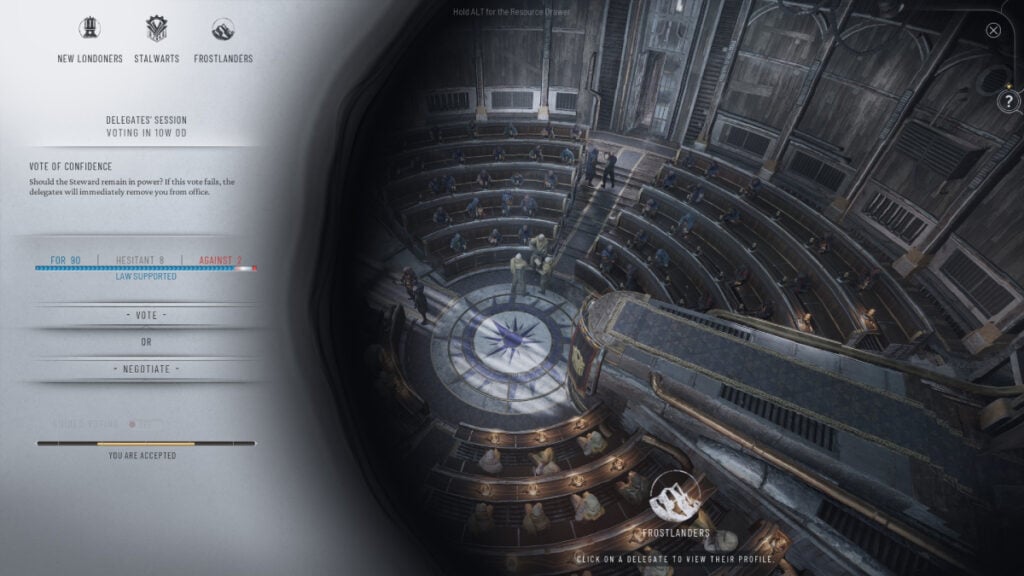
One thing I want to emphasize is that fulfilling promises and keeping all groups happy aren’t always great ideas. Let me elaborate. During my first playthrough, the Stalwarts was the faction that supported me the most. Since my trust levels were so high, they occasionally offered their help in certain ways. They’d offer a larger workforce sometimes and others the choice of lending me currency to develop city projects. However, it all came with a price. After sending Frostlanders to an expedition, the Stalwarts wanted to convert Frostlander kids into their faction. The Stalwarts had so much power that I didn’t consider the consequences.
At that time, I realized that having only one group to support me wasn’t ideal. So, I started to decline proposals. I shut a few doors and stood firm at some of my decisions. Instead of convincing people to vote for a law, I let the voting happen without me intervening much. Ultimately, you must think about what’s best for your city, and factions might make you lose sight of that.
Initially, some players might feel constrained about factions having a say in everything, but that’s much more realistic. I loved seeing these communities challenge me at every turn and even try to convince me to rethink a law we’ve previously passed. My only advice here is to be careful. Sometimes, the best short-term option doesn’t mean it’d be the best for the long run. As a quick and last example, I heard the New Londers’ proposal of letting kids be more independent, and while that gave me a larger workforce at first, all children eventually became criminals and plunged my city into chaos. Yes, a group of children ruined my run, which was mind-blowing.
Go Big or Go Cold
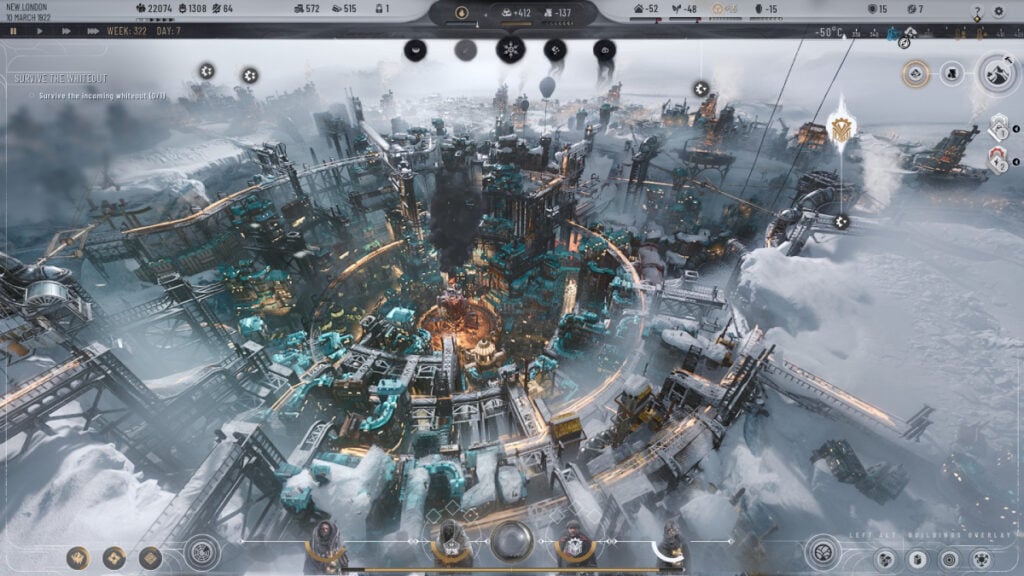
The boldest change in Frostpunk 2 is moving away from constructing single buildings to focus on full districts. At first, I wasn’t sold on it, but the more I played, the more it made sense for the plot. Since you’re managing a large city, building districts instead of a single-story house makes sense.
If you want to gather materials or fuel, you need an extraction district. If you want to build prefabs or goods, you need an industrial district. Do you need homes for the people? You know the gist: build a housing district. However, the mechanics go beyond plopping a district down and letting it run by itself. To manage and improve districts, you’ll need to build hubs and buildings. The former are built next to the district and provide a few effects, such as warehouses letting you stockpile food or materials or heating hubs that provide more warmth.
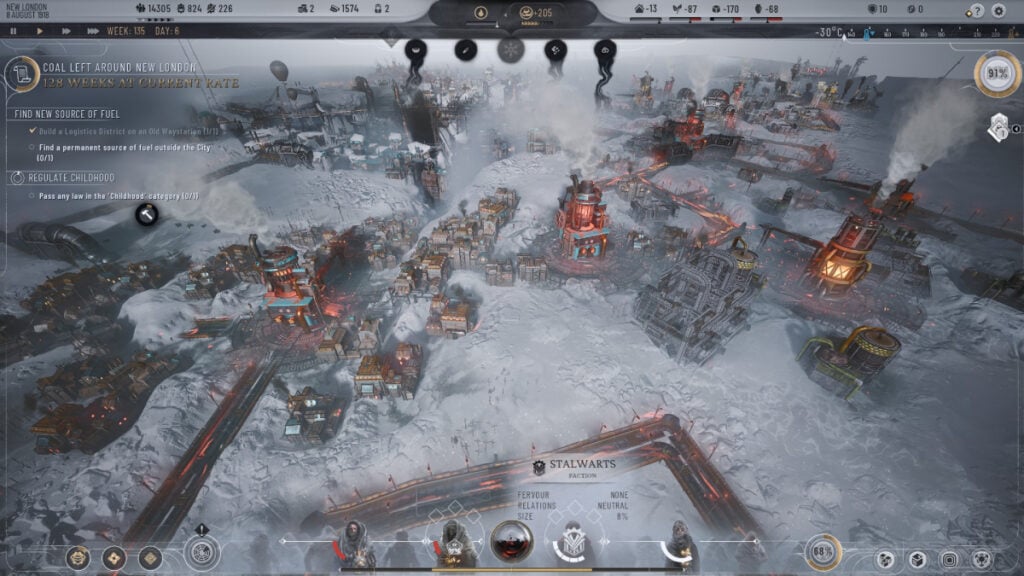
Contrary to this, buildings inside the district provide a specific function for your city. For example, you can build hospitals only inside housing districts that will allow you to treat sick people. In certain extraction districts, you can construct different mines or sawmills to speed up the gathering process. All of them come with baggage, though. Some buildings might require more heat or a larger workforce, while others will increase the city’s squalor.
Overall, it is a great system and one that makes you think about choices differently. During my first run, I packed everything together to make districts share warmth between each other, but my squalor levels rose considerably. In my second run, I was smarter while breaking the ice and building districts. I left my industrial and extraction ones in the corner while the housing districts enjoyed an unpolluted time on the other side of the map.
A Masterclass in Society-Survival Mechanics
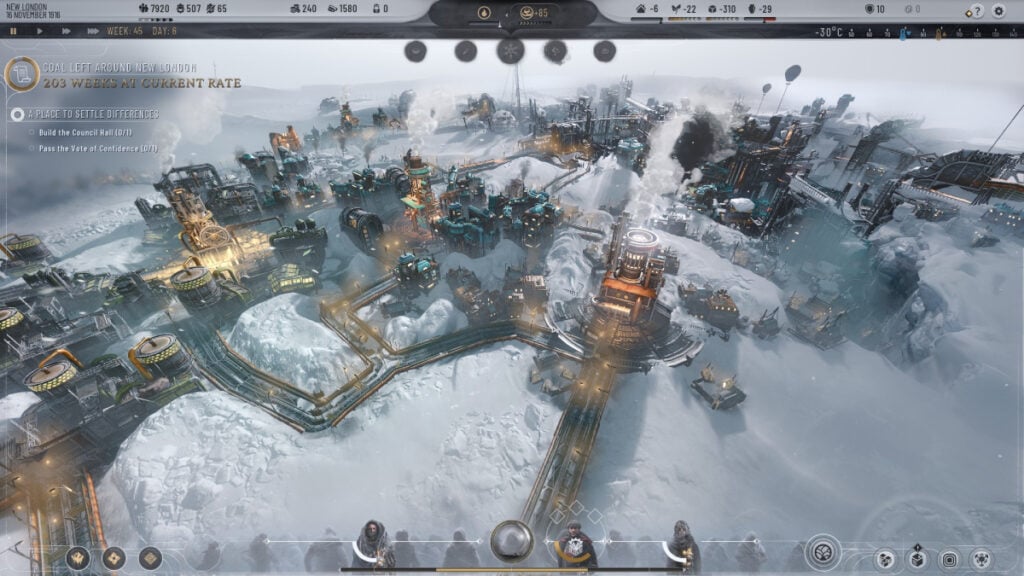
Undoubtedly, Frostpunk 2 is a unique society-survival experience that is hard to match. The depth of its simulation and permutations are astounding and will hook you for hours. However, at the time, my experience was quite unstable. I lost my story progress twice and had to restart from the prologue. Furthermore, there are several visual glitches where the text doesn’t appear correctly, and clicking on specific options doesn’t work. Still, I never felt deterred from trying. On the contrary, when I had to restart, I was glad because I knew what to do and what not to do, so I saw it as a silver lining.
For fans of the first entry, Frostpunk 2 does it justice in the best possible way. Everything is more prominent, more engaging, and vastly immersive. Even if you haven’t played the first installment, you can jump in and watch hours pass as you try to build the perfect utopia. You’ll fail at first, more than once, but Frostpunk 2 wants you to learn from your mistakes and adapt to everything your society and the wasteland throw at you. Ultimately, survival is the primary goal, but how you achieve it is up to you.
Review copy provided by Publisher.
Frostpunk 2 (PC Reviewed)
Frostpunk 2 is a terrific society-survival experience full of in-depth gameplay mechanics and challenging choices to make. Even if there were a few technical issues, they never stopped me from trying to build my ideal utopia.
Pros
- Excellent society-survival mechanics
- The city council system is one of the best additions
- Every playthough will vary thanks to its plethora of development options
Cons
- A few technical issues, one of which made me lose my story progress
- Visual glitches that didn't show text correctly

